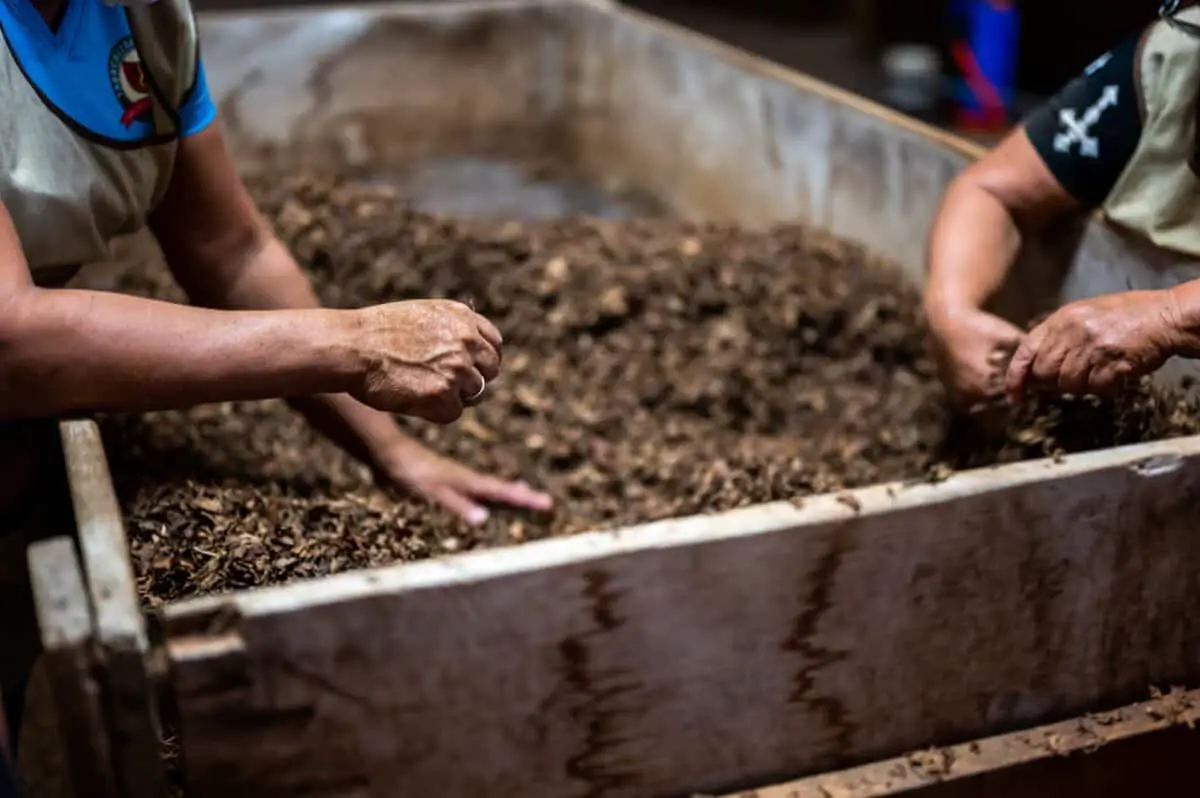Composting has many benefits, from creating a use for food scraps to building healthy, flourishing gardens. Both professional gardeners and hobbyists alike can benefit from incorporating compost into their routine. However, is it possible to compost on a balcony?
You can compost on a balcony or indoors by building or purchasing a plastic compost bin to collect and mix your materials. The end product can then be transferred to a larger compost pile or used to feed a yard or garden directly.
This article will explore the uses and benefits of compost, including directions for making compost at home. It’s important to understand the process and know which materials to use in your compost pile before you begin.
What Is Compost?
Compost is like dirt, but very rich in nutrients and useful for gardening. Many gardeners even refer to compost as “black gold,” because it’s known to be so valuable for making a healthy and productive garden.
Specifically, compost is rich in carbon and nitrogen, building blocks for every living thing on earth. By applying rich amounts of carbon and nitrogen to our garden or flower beds, we ensure that the plants we’re trying to grow have everything they need to be healthy and fruitful.
How It Works
To make compost, you need to collect living things that are rich in carbon and nitrogen, which can then break down into simpler forms to provide nutrients directly to plants. Typically, compostable substances are divided into two categories: brown materials and green materials.
Brown materials include dead leaves, tree branches, or animal manure, and provide the nutrient carbon. Green materials include fruits and vegetables, and grass clippings, and provide the nutrient nitrogen. Both carbon and nitrogen are important nutrients for growing plants.
When these materials are mixed together with each other, water, and oxygen, bacteria can break everything down and transform the mixture into a usable, soil-like consistency. As this happens, the mixture will heat up, then cool down again once the process is complete.
The finished compost can be added directly to a garden or yard, or mixed with water to create a kind of liquid fertilizer. Either method ensures that growing plants have plenty of the nutrients that they need to become healthy, fruitful, and strong.
Uses and Benefits
Composting has benefits for you and for the environment. Not only can you compost to reduce waste at home, but you can compost to improve the quality of your gardens and to decrease your carbon footprint.
- Improves the quality of plant growth
- Keeps water in the soil
- Cheaper than fertilizer
- More environmentally friendly than fertilizer
- Prevents plant diseases
- Reduces pest infestations
- Supports helpful bacteria and fungi
- Prevents nutrient waste in landfills
- Reduces methane emissions in landfills
Composting has all of these benefits no matter what scale your project is, whether you’re a professional gardener looking for ways to support rows and rows of vegetables or you’re an apartment dweller looking for something better to do with wasted eggshells and watermelon rinds.
READ ALSO: Small Balcony Gardening for Beginners: The Ultimate Guide
How Can You Compost on a Patio or Balcony?
Composting can be done in any dry, shady spot indoors or outdoors. You can purchase a special composting bin for indoor or limited-space outdoor composting at a hardware store or gardening center, or you can build one yourself:
You can make a simple indoor composting bin by drilling holes in a small plastic container, then covering the holes with mesh, or you can create a larger but patio-friendly outdoor bin by drilling holes in a larger, covered plastic container, like a trash can or bucket.
Then, you can either create compost from start to finish in your small bin or use the bin as a temporary holding station before transferring to a larger outdoor collection spot.
How to Make Compost
Before you start, it’s important to know which materials you should use and which you shouldn’t and to remember the difference between the two kinds of composting material types: green materials and brown materials.
What Can Be Composted: Green Materials
- Fruits
- Vegetables
- Grass
- Most leaves
- Other green plant materials
Green materials supply nitrogen, which is often found in synthetic fertilizers. By collecting and using green materials, you can decrease the need for these fertilizers. Also, if you find that your compost pile is mostly made of brown materials, you can add a touch of these fertilizers to create a more even balance. Ideally, your mixture should be half green and half brown.
What Can Be Composted: Brown Materials
- Hay
- Eggshells
- Coffee
- Tea bags
- Wood chips
- Cotton rags
- Dryer lint
- Hair
- Fur
- Fireplace ashes
- Paper products
- Nut shells
- Most leaves
- Other dried plant materials
Brown materials supply carbon and are very easy to obtain. Like all composting materials, it’s important to shred or break these ingredients into small pieces before adding them to your mixture.
What Can’t Be Composted
- Black walnut leaves, twigs
- Coal or charcoal ashes
- Dairy
- Eggs
- Fats
- Meat
- Bones
- Pet feces
- Anything treated with pesticides
- Anything infected, diseased
Although it might seem like any material that comes from a plant or animal should be able to be composted, many of these materials will have negative consequences for your pile and your garden, even though they decompose into nutrients.
For example, dairy, fats, and meats attract rodents and flies and carry a strong odor. Other materials, like black walnut leaves and twigs, release toxins that can harm other plants.
Although manure is a powerful fertilizer, waste from dogs and cats might contain parasites or germs that are harmful to humans, and so should be avoided.
Finally, charcoal ash and plants treated with chemical pesticides can harm or kill other plants, either in the compost pile or once applied to the garden.
Steps for Composting
- Combine one part brown material (dried plants, paper) with one part green material (produce, grass).
- Shred or chop raw materials.
- Add water until moist.
- Wait 2 to 4 weeks.
- Mix or “turn” the pile so that the materials in the center are brought to the outside.
- Repeat steps 4 and 5 for about three months.
- Till the compost into the top 6 inches (15 cm) of garden soil, or apply a 3-inch (8 cm) layer directly onto flower or garden beds in place of mulch.
If you’d like to collect compost but don’t have a garden or greenspace to use it, you can also donate your collection through a community curbside or dropoff program, usually coordinated by a local recycling or composting coordinator. Some farmers markets and community gardens also have community compost collection programs.
Collecting Compost on a Balcony or Patio
Composting can be done on a large or small scale, from several foot high piles of compost in a yard to small indoor containers. If you’re collecting compost in a smaller space, like a balcony, you can choose to either use small amounts of compost at a time or routinely add your compost to a larger collection spot outside.
Indoor or patio-friendly bins are typically smaller, made from a plastic container, bucket, or trash can. By drilling holes into one of these containers, you can create a compost-friendly collection site right in your apartment. For indoor containers, it’s recommended that you also glue a nylon screen into your bin wherever there are holes.
Optional outdoor bins are typically made from wood or plastic and can collect your finished compost or serve as a mixing site. Both indoor and outdoor bins can also be purchased from a gardening store or a hardware store.
Conclusion
Composting provides many benefits by reducing waste and keeping gardens healthy. It’s also easy to do, even if you live in an apartment. Composting indoors or on a balcony lets you be an expert gardener no matter where you live.

